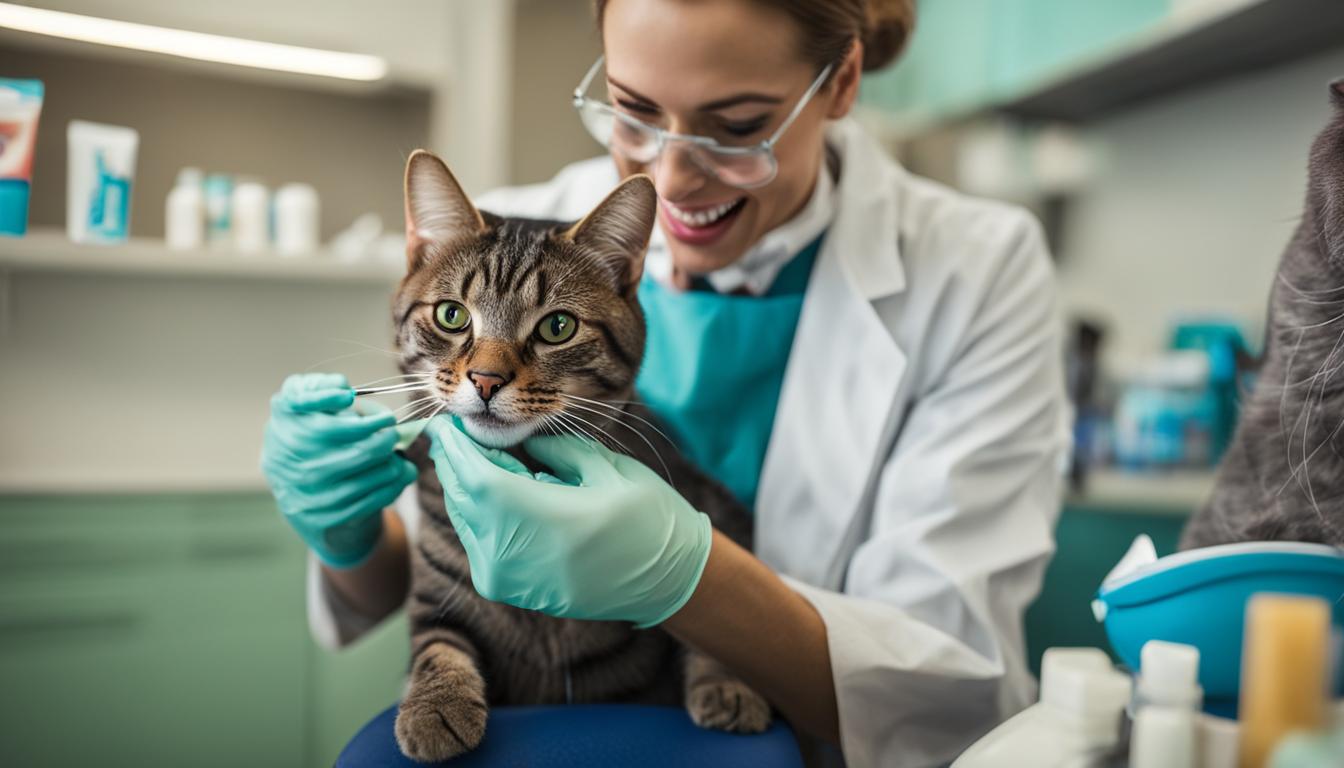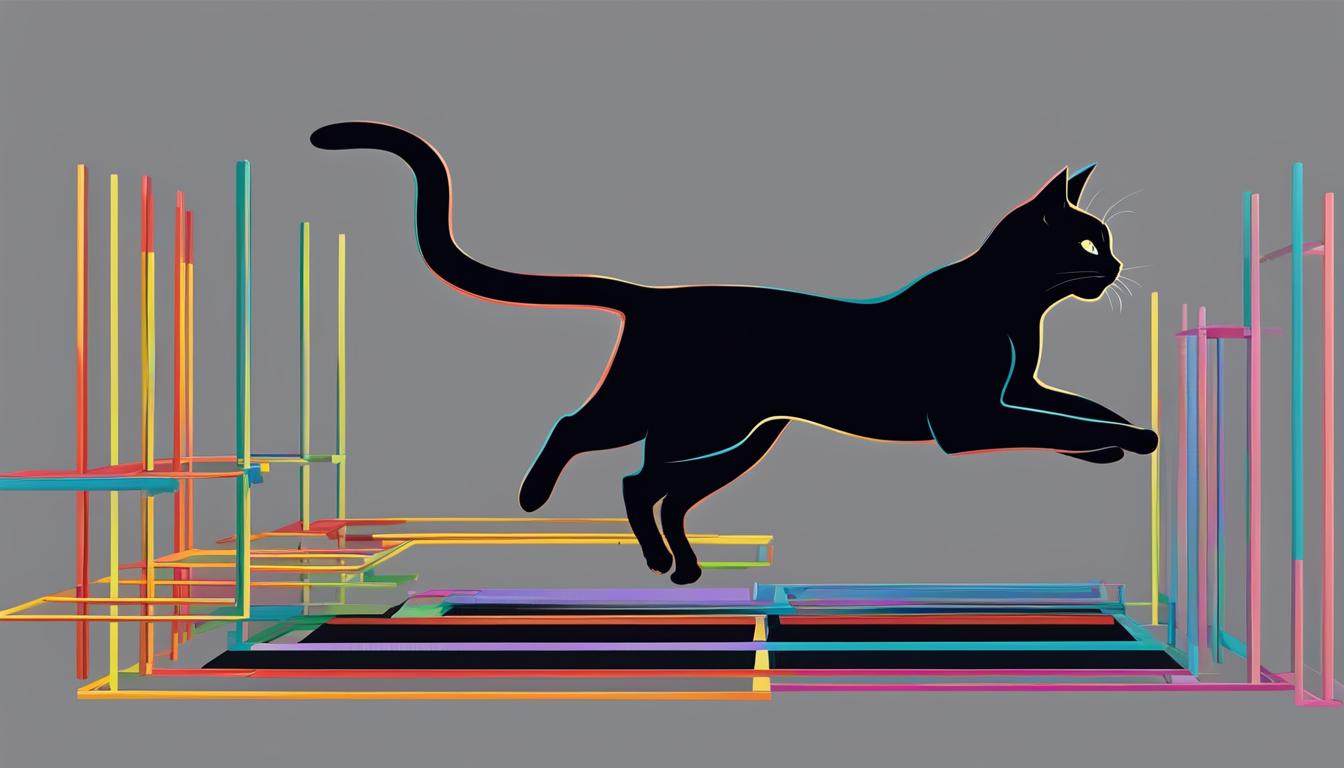Greetings, feline enthusiasts! Today, I want to dive deep into a topic that often gets overlooked – dental health in cats. Yes, you heard me right – those adorable whiskered creatures need dental care too! So, let’s embark on this curious journey into the world of feline dentistry and discover why it’s vital for our furry friends.
Key Takeaways:
- Feline dental health is often neglected but is crucial for a cat’s overall well-being.
- Dental disease affects a significant percentage of cats, leading to various oral health issues.
- Common symptoms of dental disease in cats include reluctance to eat, bad breath, and pawing at the mouth.
- Preventing dental disease involves implementing a home care routine and seeking professional veterinary dental services.
- Proactive dental care, such as brushing your cat’s teeth and using dental treats, can significantly reduce the risk of dental problems.
Common Dental Issues in Cats
When it comes to feline dental health, there are several common dental issues that cats can experience. It is important for cat owners to be aware of these issues to ensure their cat’s overall well-being. Some of the most common dental problems in cats include:
- Periodontal Disease: This is the most prevalent dental issue in cats and is caused by a buildup of plaque and tartar on the teeth and gums. If left untreated, it can lead to tooth loss and other complications.
- Tooth Resorption: This condition involves the deterioration of a tooth’s structure, leading to pain and discomfort for the cat. Tooth resorption is often difficult to detect and may require dental X-rays for proper diagnosis.
- Trauma: Cats can experience dental trauma from accidents or injuries, such as fracturing or dislodging a tooth. Prompt veterinary attention is necessary to prevent infection and further damage.
- Immune System Disorders: Certain immune system disorders can affect dental health in cats, causing inflammation, gum disease, and tooth decay.
Recognizing the signs of dental problems in cats is crucial for early intervention and treatment. Common signs include changes in eating habits, weight loss, drooling, and bad breath. If you notice any of these symptoms, it is recommended to seek veterinary care to address the underlying dental issue.
“The dental health of cats is often overlooked, but it is essential for their overall well-being. Dental disease can cause pain, discomfort, and even lead to other health complications. By staying informed about common dental issues and being proactive in caring for your cat’s oral health, you can help ensure their long-term comfort and happiness.” – Dr. Jane Smith, DVM
To address dental issues in cats, tooth extraction may be necessary in severe cases. Aftercare is crucial for a cat’s recovery. This may involve providing soft food, pain management medication, and monitoring the incision site for any signs of infection. It is important to follow the veterinarian’s instructions and maintain a clean and calm environment for the cat during the healing process.
Overall, being aware of common dental issues in cats and taking proactive measures to address them is vital for maintaining feline dental health. Regular dental check-ups, implementing a home care routine, and seeking professional veterinary care when needed are key to supporting your cat’s oral well-being.
| Dental Issue | Signs and Symptoms |
|---|---|
| Periodontal Disease | Bad breath, swollen or bleeding gums, difficulty eating |
| Tooth Resorption | Pain or discomfort, tooth sensitivity, drooling |
| Trauma | Broken or loose teeth, bleeding, visible injuries |
| Immune System Disorders | Inflammation, gum disease, recurrent infections |
Preventing Dental Disease in Cats
Proper dental care is essential for preventing dental disease in cats. Regularly brushing your cat’s teeth is the most effective way to maintain their dental health. Although it may sound challenging, with a little patience and practice, you can make brushing your cat’s teeth a part of their routine.
Brushing Your Cat’s Teeth
To brush your cat’s teeth, you will need a cat-specific toothbrush and toothpaste. Never use human toothpaste, as it can be toxic to cats. Start by getting your cat familiar with the toothbrush and toothpaste. Let them sniff and taste the toothpaste to make it more appealing. Gently massage their gums with your finger to prepare them for the toothbrush.
Once your cat is comfortable, introduce the toothbrush. Start by brushing in short, gentle strokes along the gum line. Focus on the outer surfaces of the teeth, as this is where most plaque and tartar build-up occurs. Gradually increase the brushing time as your cat becomes more accustomed to the process.
Remember to make the experience positive for your cat by providing rewards, praise, and gentle reassurance. If your cat refuses to cooperate with brushing, consult your veterinarian for alternative dental care options.
Dental Treats for Cat Health
In addition to brushing, dental treats can be a helpful tool in preventing dental disease in cats. Dental treats are designed to promote oral hygiene by reducing plaque and tartar build-up. Look for treats that carry the Veterinary Oral Health Council (VOHC) seal, indicating that they have undergone scientific testing and are proven to be effective.
| Treat | Description | Benefits |
|---|---|---|
| Greenies Dental Treats | A crunchy treat with a textured surface that helps clean teeth | Reduces plaque and tartar, freshens breath |
| Hill’s Prescription Diet Dental Care | A prescription diet specifically formulated to reduce dental plaque and tartar | Supports overall dental health |
| Feline Greenies Dental Treats | A soft treat with a unique shape to clean teeth down to the gumline | Control plaque and tartar, freshen breath |
Just like us, cats need proper dental care to prevent dental disease. By regularly brushing their teeth and providing dental treats, you can help keep their teeth and gums healthy. Remember to consult your veterinarian for guidance on the best dental care routine for your cat.
By incorporating brushing and dental treats into your cat’s routine, you can significantly reduce the risk of dental disease and promote their overall health. Remember to be patient and consistent, and always consult your veterinarian if you have concerns or questions about your cat’s dental health.
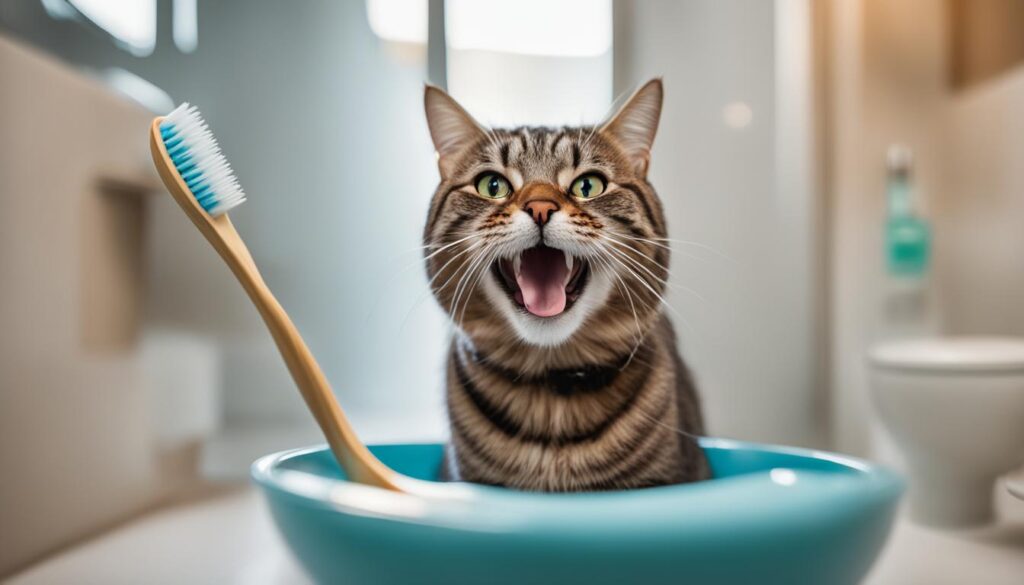
Professional Veterinary Dental Services for Cats
Feline dental health is a crucial aspect of overall well-being, and professional veterinary dental services play a vital role in ensuring the dental health of cats. These services include a comprehensive oral health assessment and treatment (COHAT), which involves a thorough examination of the cat’s mouth, dental X-rays, tooth extraction if necessary, and a deep cleaning of the teeth. The COHAT is performed under general anesthesia to ensure the cat’s comfort and safety.
During the COHAT, the veterinarian will carefully examine the cat’s teeth and gums, looking for any signs of dental disease such as periodontal disease, tooth resorption, or trauma. Dental X-rays may be taken to assess the health of the tooth roots and identify any hidden problems that may not be visible to the naked eye. If any teeth are severely diseased or damaged, they may need to be extracted to prevent further complications.
The deep cleaning of the teeth, also known as scaling and polishing, removes plaque and tartar buildup above and below the gumline. This is done using specialized dental instruments and ultrasonic scalers. The veterinarian will also perform a thorough oral examination, checking for any abnormalities or oral tumors that may require further treatment.
| Benefits of Professional Veterinary Dental Services |
|---|
| 1. Early detection and treatment of dental disease |
| 2. Prevention of tooth decay and other dental complications |
| 3. Improved overall oral health and quality of life for the cat |
Professional veterinary dental services are essential for maintaining the dental health of cats and preventing tooth decay and other dental complications. Regular check-ups and dental cleanings under anesthesia should be scheduled at least once a year, although older cats or those with existing dental issues may require more frequent visits. By seeking professional dental services for your cat, you can ensure their long-term dental health and overall well-being.
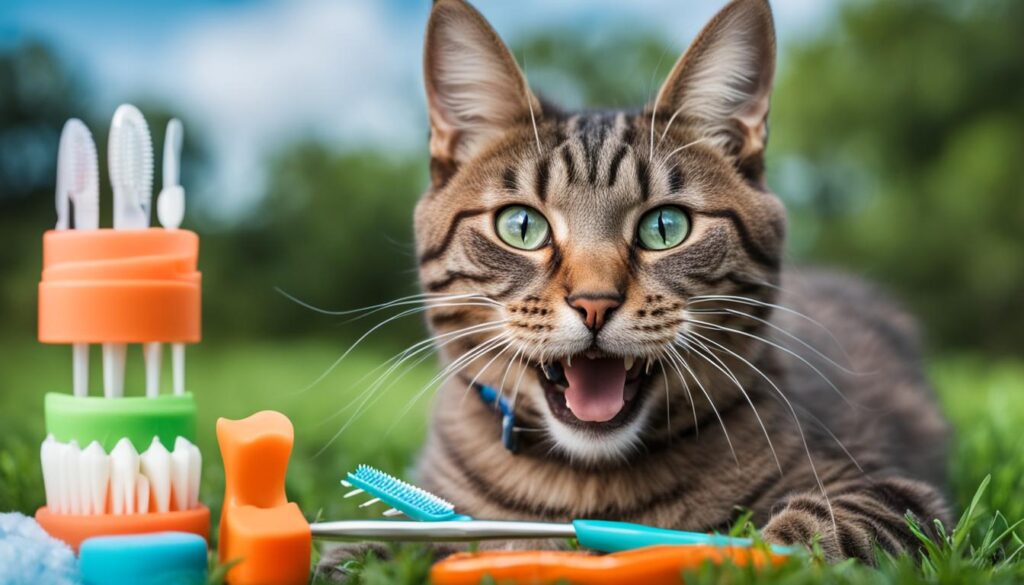
Dental Care at Home
Caring for your cat’s dental health at home is an essential part of ensuring their overall well-being. Regularly brushing your cat’s teeth is the most effective way to prevent dental disease and maintain oral hygiene. Introduce a home care routine from an early age to acclimate your cat to the process. Use feline toothpaste and a toothbrush or finger brush designed specifically for cats.
In addition to brushing, there are dental treats and sprays available that can help control plaque and tartar buildup. These products can provide additional oral hygiene benefits and are a great way to supplement your cat’s dental care routine. Just be sure to choose products that have scientific evidence of their effectiveness.
Regularly checking your cat’s mouth for any signs of dental problems is also important. Look for red or swollen gums, bleeding, loose or broken teeth, and any unusual changes in the appearance of their mouth. If you notice any concerning symptoms, it’s best to seek professional veterinary dental care.
“Regular brushing and the use of dental treats can greatly contribute to maintaining your cat’s oral health and preventing gum disease.”
Feline Bad Breath Solutions
Bad breath in cats can be a sign of dental issues or other underlying health problems. If your cat’s breath has an unpleasant odor, it’s important to address the root cause. Regular brushing and the use of dental treats can greatly contribute to maintaining your cat’s oral health and preventing gum disease, which can often be a leading cause of bad breath in cats.
If your cat’s bad breath persists or worsens despite regular dental care, it’s recommended to consult with a veterinarian for further evaluation. They can examine your cat’s mouth and determine if there are any additional dental or health issues that need to be addressed. Remember, good oral hygiene is not only important for fresh breath but also for your cat’s overall health and well-being.
| Dental Care Tips | Benefits |
|---|---|
| Regular brushing | Prevents plaque and tartar buildup |
| Use of dental treats | Supplements oral hygiene routine |
| Regular check-ups | Early detection of dental issues |

The Benefits of Dental Cleaning Under Anesthesia
When it comes to cat dental cleaning procedures, one of the most effective methods is performing the cleaning under anesthesia. Although some pet owners may have concerns about anesthesia, it offers several important benefits for ensuring a thorough and successful dental cleaning.
Firstly, anesthesia allows for a more comprehensive examination and treatment of a cat’s dental health. The cat remains comfortable and still during the procedure, enabling the veterinarian to thoroughly clean the teeth and gums without any movement or resistance. This ensures that all areas of the mouth are properly cleaned, reducing the risk of missed dental issues.
Anesthesia also allows for dental X-rays to be taken, if necessary. This can help identify any hidden dental problems, such as tooth decay or root damage, that may not be apparent during a visual examination alone. By capturing detailed images of the teeth and jaws, the veterinarian can make more accurate diagnoses and develop appropriate treatment plans.
“Performing dental cleaning under anesthesia reduces the risk of injury to both the cat and the person performing the procedure.”
Furthermore, dental cleaning under anesthesia reduces the risk of injury to both the cat and the person performing the procedure. Cats can be sensitive and may become agitated or aggressive when their mouths are manipulated. By ensuring the cat is under anesthesia, the risk of accidental bites or scratches is greatly minimized, making the procedure safer for everyone involved.
While anesthesia does carry some risks, advancements in veterinary anesthesia have made the process safer than ever. Veterinarians take precautions to assess the cat’s overall health before administering anesthesia, ensuring that the procedure is suitable and the risks are minimized. The benefits of a thorough and effective dental cleaning under anesthesia far outweigh the potential risks, especially considering the long-term impact on a cat’s dental health.
| Benefits of Dental Cleaning Under Anesthesia | Risks/Potential Concerns |
|---|---|
| Thorough cleaning of teeth and gums | Potential risks associated with anesthesia |
| X-rays can be taken to identify hidden dental problems | Possible adverse reactions to anesthesia |
| Reduces the risk of injury to the cat and the veterinary staff | Monitoring and managing anesthesia during the procedure |
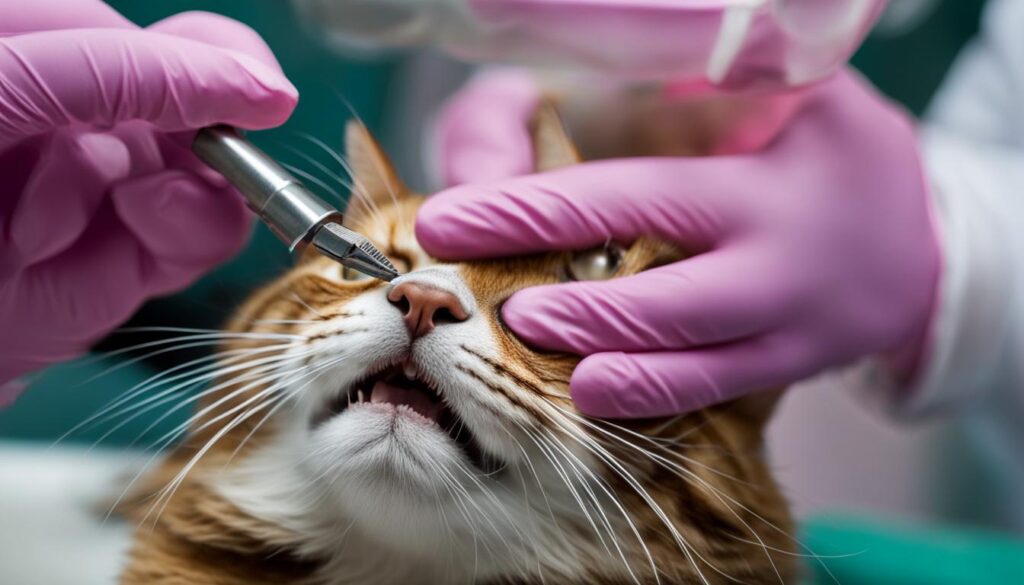
In conclusion, dental cleaning under anesthesia offers numerous benefits for ensuring a cat’s dental health. It allows for a thorough examination, proper cleaning, and the identification of hidden dental problems. While anesthesia carries risks, veterinary advancements have made the process safer than ever. By opting for dental cleaning under anesthesia, cat owners can prioritize their furry friend’s dental well-being and maintain their overall health for years to come.
Conclusion
As I wrap up this guide to feline dentistry, I can’t stress enough the importance of professional veterinary dental services and feline oral hygiene products in maintaining your cat’s dental health. Just like us humans, cats also need regular dental care to prevent dental disease and ensure overall well-being.
By implementing a home care routine, including brushing your cat’s teeth and using feline oral hygiene products, you can significantly reduce the risk of dental issues. However, it’s crucial to complement these efforts with professional veterinary dental services. Regular check-ups and dental cleanings under anesthesia are vital for preventing and treating dental disease effectively.
Remember, your cat’s teeth and gums play a significant role in their overall health and happiness. So, don’t neglect their dental needs. Seek professional veterinary dental services, use high-quality feline oral hygiene products, and ensure regular check-ups to keep your furry friend’s pearly whites in top-notch condition.
With a little extra care and attention, you can help your cat maintain a healthy and beautiful smile for the rest of their feline lives. So, let’s prioritize their dental health and give them something to purr about!
FAQ
What are the common dental issues in cats?
Common dental issues in cats include periodontal disease, tooth resorption, trauma, and immune system disorders.
What are the signs of dental problems in cats?
Signs of dental problems in cats can include changes in eating habits, weight loss, drooling, and bad breath.
How can I prevent dental disease in cats?
Regularly brushing your cat’s teeth, using dental treats, and maintaining good gum health can help prevent dental disease in cats.
Why are professional veterinary dental services important for cats?
Professional veterinary dental services, such as comprehensive oral health assessments and cleanings, are crucial for maintaining a cat’s dental health and preventing further complications.
How can I take care of my cat’s dental health at home?
Regularly brushing your cat’s teeth with feline toothpaste, using dental treats and sprays, and regularly checking their mouth for signs of dental problems are all important for maintaining your cat’s dental health at home.
What are the benefits of dental cleaning under anesthesia for cats?
Dental cleaning under anesthesia allows for a more thorough examination and treatment of a cat’s dental health, ensuring their comfort and safety during the procedure.

